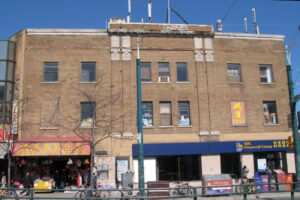Toronto’s Public Health Work with Naloxone
Toronto, renowned for its iconic skyline and rich cultural tapestry, has been facing an uphill battle against the opioid crisis. As drug overdoses become increasingly prevalent, the city has turned to Naloxone as a beacon of hope. Let’s dive deep into how this life-saving drug and the tireless efforts of the city’s public health workers are making a difference.
A Glimpse into the Opioid Crisis
Before we delve into the magic of Naloxone, it’s crucial to understand the gravity of the opioid situation in Toronto. Opioids, though beneficial for pain relief, can be deadly when misused or abused. With the rise of fentanyl and other potent synthetic opioids on the streets, accidental overdoses have skyrocketed. In fact, these overdoses aren’t limited to chronic drug users; even first-time or occasional users can fall victim.
Did you know? In 2012 alone, opioids claimed the lives of over 2,000 Canadians, a grim reminder of the urgency to combat this crisis.
Naloxone: The Life-Saver in a Vial
Often dubbed the “overdose antidote,” Naloxone is a non-addictive medicine that can reverse the effects of an opioid overdose. When someone overdoses, their breathing can slow or stop altogether, leading to a lack of oxygen in the brain. That’s where Naloxone swings into action. Administered as a nasal spray or an injection, it works by blocking the effects of opioids on the brain, thereby restoring normal breathing.
- Benefits of Naloxone:
- Rapid action within 2-5 minutes
- Can be administered by anyone, even without medical training
- No potential for abuse or addiction
Toronto’s Stance: Arm the Masses
With the crisis growing like wildfire, Toronto’s strategy has been clear: make Naloxone as accessible as possible. The city has been advocating for widespread training on how to use the drug and has been distributing free kits to those at risk, their friends, and family.
Highlight: According to a report by the Canadian Broadcasting Corporation, Toronto’s initiatives to distribute Naloxone have seen tremendous success, with many lives being saved due to timely administration.
Naloxone Training: More than Just a Tutorial
Toronto’s approach isn’t just about handing out kits. It’s about creating a community that’s equipped and empowered. The city offers extensive training programs where attendees learn:
- How to recognize an overdose
- Steps to administer Naloxone effectively
- Aftercare post-administration to ensure the victim’s safety
These training sessions, often held in collaboration with community organizations, ensure that every attendee leaves with the confidence to act in an emergency.
Future Endeavors: Where Do We Go from Here?
While Naloxone has undoubtedly been a game-changer, the fight against the opioid crisis is far from over. The city recognizes the need for a multi-pronged approach. Future initiatives include:
- Enhancing drug education in schools
- Advocating for more addiction treatment centers
- Collaborating with pharmacies for wider Naloxone distribution
- Fostering community dialogue to destigmatize addiction
In a Nutshell

Toronto’s public health work with Naloxone is a testament to the city’s commitment to safeguarding its residents. By promoting awareness, ensuring accessibility, and fostering community engagement, Toronto aims to turn the tide against the opioid crisis. It’s a reminder that when a community comes together, challenges, no matter how daunting, can be overcome.









